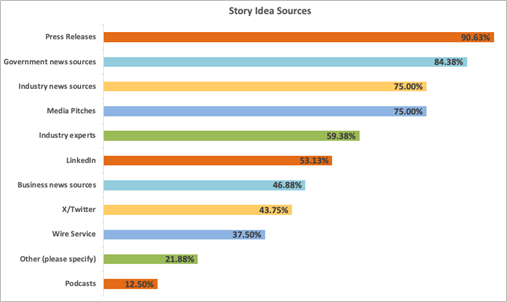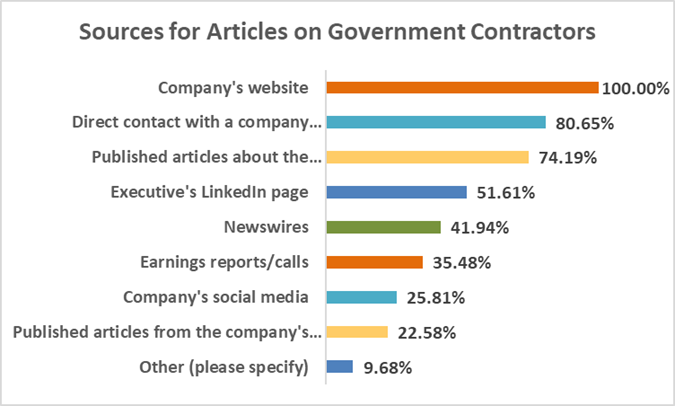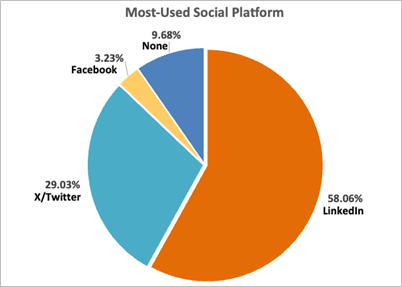8 ways to improve your media coverage

Gettyimages.com/SimpleImages
Boscobel's Joyce Bosc shares the findings of her latest survey of GovCon reporters and offers tips to help build those relationships.
Unlocking effective media coverage is the primary goal of every public relations professional. What works in one market doesn’t necessarily reflect best practices in another.
For government contractors, the key to credible coverage starts with building positive working relationships with the reporters who cover government contracting, including effectively sharing company news at a time and in a way that supports the way the journalists work.
To find out more about GovCon reporters’ processes and preferences, Boscobel Marketing Communications conducted its second annual survey of GovCon journalists. The 2024 State of GovCon Journalism Report shares findings from this year’s survey.
Based on these findings, here are the top eight insights we gathered from GovCon reporters.
ONE: GovCon Reporters are Seasoned Professionals
A whopping 59% of participating journalists have been in the business for more than 20 years. An additional 28% have been reporting for 11–20 years. As a group, GovCon reporters are highly experienced—they know what they’re doing and what they need.
Pro Tip: Take time to learn the GovCon PR trade, so you are serving reporters well (and your company, too). A service-oriented mindset, respect, and a humble spirit are good places to start. Clear writing and storytelling are also essential ingredients.
TWO: AI Will Remain a Hot Topic in 2024
When we asked, “What news stories, innovations, or industry trends are you most looking forward to covering this year?” a full 50% of reporters answered this open-ended question with “artificial intelligence” or “AI.”
Pro Tip: If your company is leading the way in AI, you have an opportunity to engage and educate reporters who may turn to your executives and experts for background information, insights, and quotes. However, if you are just now adding AI to your service repertoire, that’s not enough to hook reporters’ interest. Instead, get involved in industry AI collaborations and hold off on contacting reporters until you have a solid news story to share.
THREE: Reporters are Mixed on Their Use of Generative AI at Work
Though reporters are closely tracking the evolution of AI in the federal market, not everyone is on board with adopting the technology for their own use. Twenty-four percent are using tools such as ChatGPT, Gemini, or DALL-E at work. Another 17% are using AI in their personal lives only, and 17% plan to start using it this year.
Yet 28% do not plan to explore using these tools and the rest, 14%, are simply not sure whether they will utilize generative AI in their work.
Pro Tip: If you’re using these tools at work, be sure you’re being responsible, too. Use AI and plagiarism checkers to ensure your final products—including pitches, press releases, and blogs—are truly original. The last thing you’ll want to do is insert unoriginal content into reporters’ jam-packed workload.
FOUR: Press Releases Remain No. 1 for Story Ideas

Of all article sources, press releases top the list, with 91% of reporters using press releases for story ideas. Only 26% of GovCon reporters are exclusively covering the largest contractors. For small and mid-sized contractors, who don’t have the resources to do the advertising that large contractors do, newsworthy pitches and press releases are especially helpful to get on the radar with GovCon reporters.

Pro Tip: Reporters, again, emphasize the need for PRs to be newsworthy. “Have a news hook!” one advises. “Convey a compelling angle for news trends,” suggests another. PR pros should take the step of connecting the company’s news to a larger issue. “It is unusual for us to write about the company for the sake of the company,” explained one reporter.
FIVE: All Reporters Review GovCon Websites as Their Go-To Story Source
Before writing about a government contractor, 100% of reporters check the company website. Most also connect with company spokespersons and read articles covering the company and executives.

Pro Tip: Before beginning any PR efforts, be sure your website is reporter-friendly. Create a newsroom for your press releases, executive bios, and thought leadership pieces, and make your named media contact easy to find. Be sure your execs are media trained since reporters expect it. Keep your company media policy up to date and distribute it to all new teammates.
SIX: LinkedIn is Thriving While X is on the Decline
Reporters are primarily using LinkedIn for work with 58% are using the platform, up from 50% a year ago. Only 30% are on X/Twitter, a decrease from 39% in last year’s survey. No other platforms have significant use by GovCon reporters. No surprise, reporters are choosing social media platforms based on ease of use, ability to build a network, and engagement with their audiences.


Pro Tip: Social media, especially LinkedIn, presents an opportunity to connect and engage with targeted reporters. Keep your company’s profile and presence updated, with a steady stream of posts that share company news, milestones, perspectives, and culture. Follow, like, share, and comment on reporters’ posts, to support their social media presence.
SEVEN: Generally, Reporters See PR Pros as Beneficial
Most GovCon reporters characterize their dealings with PR professionals as either mutually beneficial (45%) or neutral (35%). That’s an improvement over last year, when 50% saw PR pros and firms as “neutral.”
Seventeen percent fall into the “it depends” category, saying, “It depends very much on the quality/skills/personality of the individual.” While some PR pro relationships are valuable, “some inundate us with releases we wouldn't cover, and we have had others berate us for doing our jobs and accurately reporting the news.” (Ouch!)
Pro Tip: We take this feedback seriously. In part because we’ve seen and heard the mixed level of professionalism in the field. For PR pros early in their careers, seek out training, mentors, and experiences that will shape the skills and expertise that reporters expect (and your company deserves).
The easiest way is to put yourself in reporters’ shoes to decide whether, how, and when to share a pitch or press release. Here are a few other specifics, from the latest survey:
- Be 100% sure your pitches are relevant to the reporter’s beat
- Only pitch newsworthy stories and updates
- Short, clear pitches are best
- Best days to pitch: Tuesday and Monday
- No more than three follow-up emails when sending a pitch
EIGHT: GovCon Reporters are an Optimistic Bunch
As a group, 44% are either very or somewhat optimistic and another 44% are neutral about the state of federal government journalism. As one reporter put it, “It’s a great market to cover.”
Pro Tip: Immerse yourself in all that’s happening in your market. Be curious. Ask smart questions. Learn about reporters. Above all, cultivate your own skills, sense of appreciation, and respect for everyone who operates in this industry, so you’re ready to serve the reporters who are sharing the news and updates with us all.


